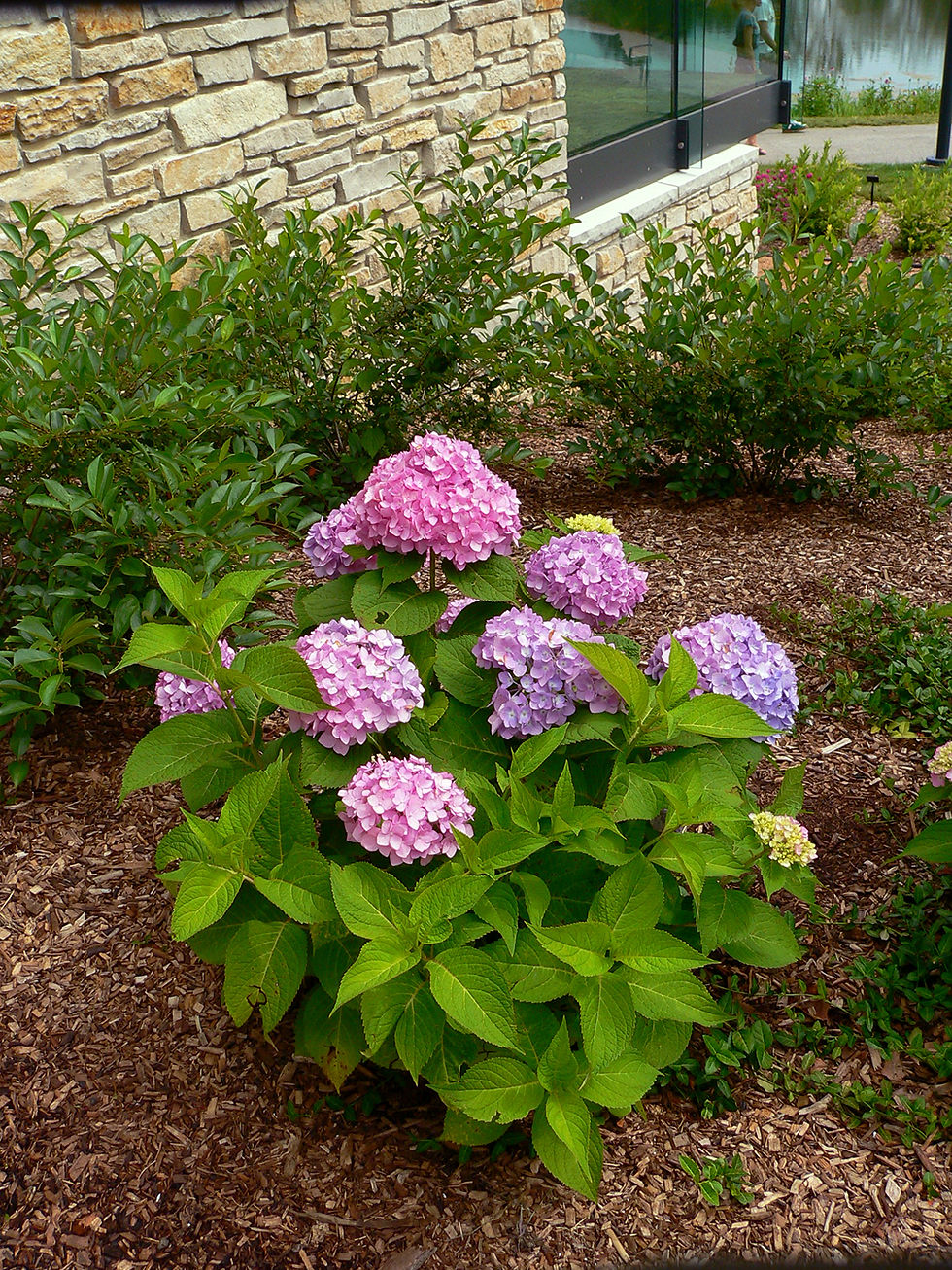
Hydrangeas – An Essential Garden Classic
Gail Maifeld, Dakota County Master Gardener
The Hydrangea shrub is a classic garden staple because of its hardiness and beautiful blooms. Shopping for Hydrangea at your local garden store can be overwhelming because there are many different varieties of this lovely perennial shrub. This article describes the different varieties, their characteristics and care needs. Read on to learn more about which hydrangeas would work well in your yard.

Hydrangea is a hardy and popular shrub that thrives in Minnesota’s climate. They provide beautiful flowers later in the season and large attractive leaves in a shape that provides excellent structure in your garden. When choosing hydrangea, it is important to note that they are not all the same. The different varieties have different characteristics and care needs. This article will discuss the features and needs of four different types of hydrangeas.
Hydrangea paniculata have cone shaped flowers that change from light green to deep pink and then tan flower heads in the fall. The flower heads provide landscape interest during the winter and make beautiful indoor flower arrangements all winter. Paniculata ‘s flowers are not susceptible to frost damage because they bloom on new wood. Hydrangea paniculata can grow to 7 feet tall.
Pruning should be delayed until late winter or early spring. The pruning cut or head cut, should be ¼” above the swollen bud. Click here for more information about pruning hydrangeas from the University of Minnesota Extension. Fertilize in spring and early summer with a general garden fertilizer.

Favorite panicle hydrangeas are:
Quick Fire (H paniculata ‘Bulk’)
Limelight (H paniculata ‘limelight’)
First additions, Berry White (H paniculata ‘Reuba’)

Hydrangea macrophylla, “big leaf hydrangea” or “mophead hydrangea,” is a zone 5 plant that can do well in southern Minnesota. It typically grows 3 – 6 feet tall and wide and produces large clusters of long-blooming flowers either in lacecap or mophead form. Blooms are pink in slightly acidic to alkaline soils and blue in highly acidic soils.
Hydrangea macrophylla blooms on old and new wood. Prune hydrangea macrophylla in early fall after they are done flowering with a diagonal cut ¼” above the bud. The Endless Summer (H. macrophylla ‘Bailmer’) cultivar is an exception; this cultivar blooms on last year’s wood and new wood. This variety will bloom whether it is pruned or not. Prune in August after flowering. Fertilize three times a season with small amounts beginning in the early spring.

Popular varieties are:
Blushing Bride
Bloom Struck
Summer Crush
Twist ‘n Shout
Hydrangea aborescens or “smooth hydrangea” needs to grow several seasons before pruning. It has giant white flower heads that bloom in mid-summer. They turn green when dry. They typically grow 3 – 6 feet. Apply one application of fertilizer in late winter or early spring.
When the shrub is established, prune it to the ground in the spring. Flower buds grow on this season’s growth or new wood.
Examples of Hydrangea aborescens or smooth hydrangeas are:
Annabelle (H. aborescens ‘Annabelle’) (a classic)
Invincible mini mauvette (H. aborescens)
Incrediball (H. aborescens ‘Abetwo’) (bred to have stronger stem strength)
Hydrangea petolaris or climbing hydrangea is a tough wood vine that produces large clusters of white flowers. It likes full sun to part shade and acidic soil. This sturdy vine can grow 30-50 feet tall and 5-6 feet wide. Plant this vine on a sturdy trellis or fence where you want to have a dense long-living screen. Once established, this vine can be aggressive.
Climbing hydrangea needs to no pruning. Only prune out the dead wood stems.
Types of climbing hydrangea:
Miranda
Silver lining
Flying Saucer
Other facts to know about hydrangeas care:
Sunlight: Most hydrangeas like morning sun and afternoon shade. Most will not bloom if planted in full shade.
Fertilizer: General garden fertilizer is adequate for hydrangea.
Water: Over or underwatering will result in fewer blooms. Test the soil with your finger and don’t water if the soil is wet.
Soil Nutrients: A lush bush plant with no blooms is a sign of too much nitrogen. Check to see if lawn fertilizer is getting into the soil. Lawn fertilizers are high in nitrogen.
Pruning: Over pruning and pruning in the spring can cause a hydrangea to skip blooming. Pruning in late spring can cut off too many buds.
Weather: Late freezes can damage new buds and be the reason for no blooms.
Hydrangea is a beautiful shrub along a foundation or as an anchor for a perennial bed.
Be sure to read the height information that accompanies your shrub. Individual Hydrangeas have different leaf structure, bloom size, and colors. This shrub is easy to grow.
Photo credits: University of Minnesota Extension (1-4)
Resources:
University of Minnesota, extension.umn.edu/hydrangea
Monrovia, Monrovia.com
Missouri Botanical Garden.org
https://www.thespruce.com/climbing-hydrangea-vines-2132893



